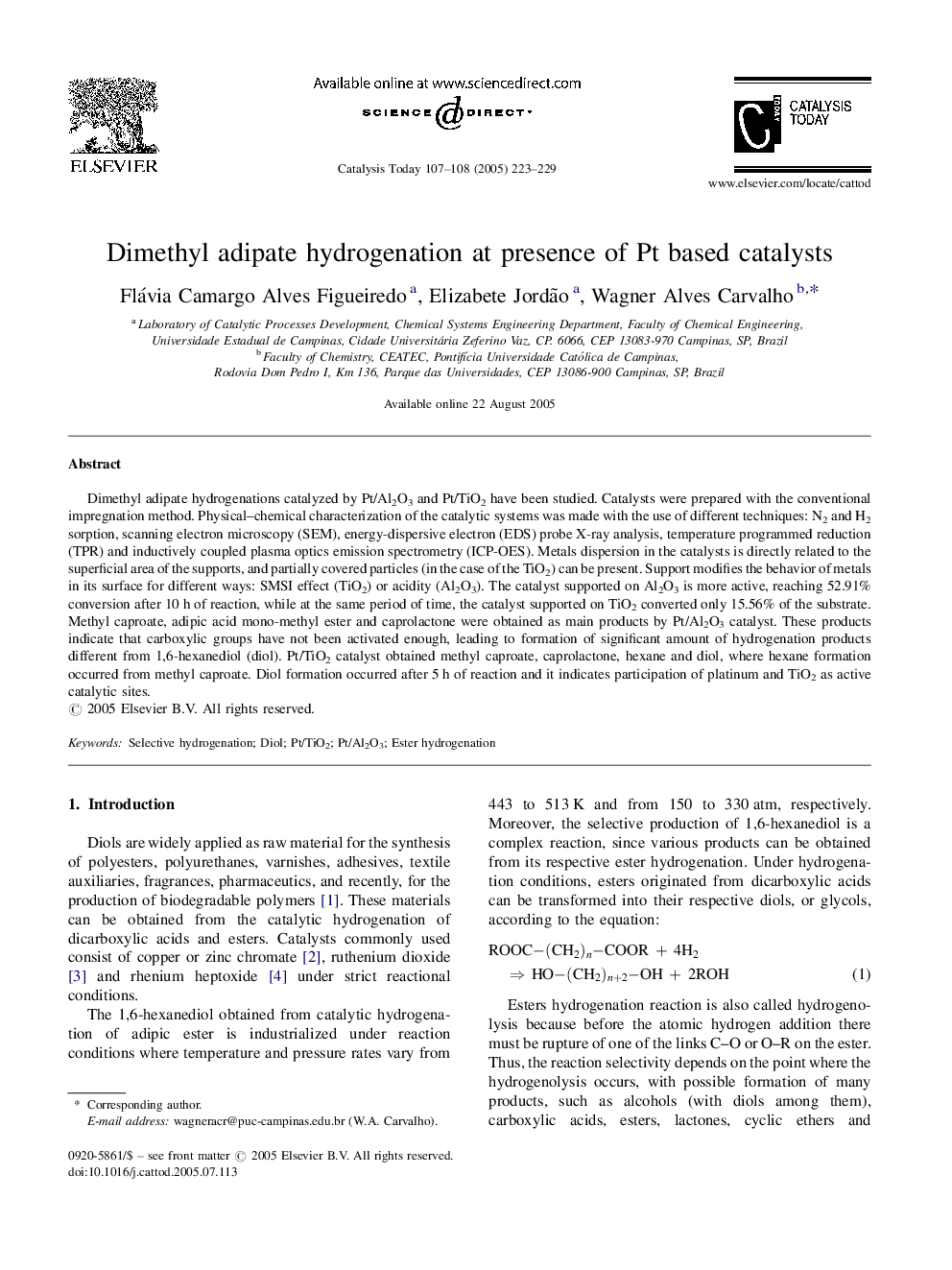| کد مقاله | کد نشریه | سال انتشار | مقاله انگلیسی | نسخه تمام متن |
|---|---|---|---|---|
| 9610188 | 47163 | 2005 | 7 صفحه PDF | دانلود رایگان |
عنوان انگلیسی مقاله ISI
Dimethyl adipate hydrogenation at presence of Pt based catalysts
دانلود مقاله + سفارش ترجمه
دانلود مقاله ISI انگلیسی
رایگان برای ایرانیان
کلمات کلیدی
موضوعات مرتبط
مهندسی و علوم پایه
مهندسی شیمی
کاتالیزور
پیش نمایش صفحه اول مقاله

چکیده انگلیسی
Dimethyl adipate hydrogenations catalyzed by Pt/Al2O3 and Pt/TiO2 have been studied. Catalysts were prepared with the conventional impregnation method. Physical-chemical characterization of the catalytic systems was made with the use of different techniques: N2 and H2 sorption, scanning electron microscopy (SEM), energy-dispersive electron (EDS) probe X-ray analysis, temperature programmed reduction (TPR) and inductively coupled plasma optics emission spectrometry (ICP-OES). Metals dispersion in the catalysts is directly related to the superficial area of the supports, and partially covered particles (in the case of the TiO2) can be present. Support modifies the behavior of metals in its surface for different ways: SMSI effect (TiO2) or acidity (Al2O3). The catalyst supported on Al2O3 is more active, reaching 52.91% conversion after 10Â h of reaction, while at the same period of time, the catalyst supported on TiO2 converted only 15.56% of the substrate. Methyl caproate, adipic acid mono-methyl ester and caprolactone were obtained as main products by Pt/Al2O3 catalyst. These products indicate that carboxylic groups have not been activated enough, leading to formation of significant amount of hydrogenation products different from 1,6-hexanediol (diol). Pt/TiO2 catalyst obtained methyl caproate, caprolactone, hexane and diol, where hexane formation occurred from methyl caproate. Diol formation occurred after 5Â h of reaction and it indicates participation of platinum and TiO2 as active catalytic sites.
ناشر
Database: Elsevier - ScienceDirect (ساینس دایرکت)
Journal: Catalysis Today - Volumes 107â108, 30 October 2005, Pages 223-229
Journal: Catalysis Today - Volumes 107â108, 30 October 2005, Pages 223-229
نویسندگان
Flávia Camargo Alves Figueiredo, Elizabete Jordão, Wagner Alves Carvalho,